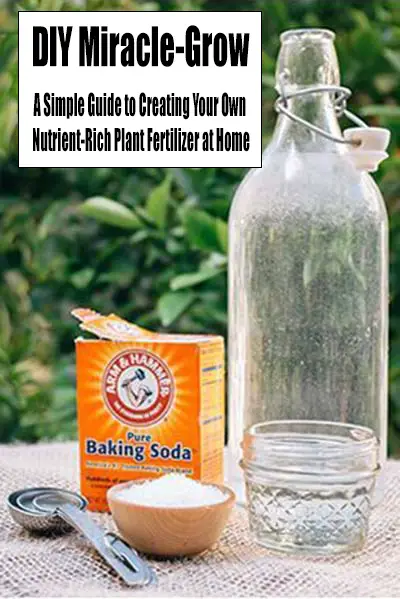A Simple Guide to Creating Your Own Nutrient-Rich Plant Fertilizer at Home
A lot of people, myself included, HATE to use commercial fertilizer on their plants and veggies.
It works but there are so many chemicals involved, some I can’t even pronounce that are so bad for the environment.
Today I am sharing a little family secret recipe (I know, not so secret anymore) that has had the same results if not better than miracle-grow. We call it the plant growing solution.
This recipe has been in our family for over 60 years! I hope you can use it and make it your family go-to fertilizer too.
Growing Solution Recipe
Printable recipe at the bottom
What you need:
- 1 gallon of water
- 1 tbsp epsom salt
- 1 tsp baking soda
- 1/2 tsp of household ammonia.
- Mix all ingredients together and use once a month on your plants.
What to do:
- Mix all ingredients together. (shake before use)
- use once a month on your plants by mixing a 1/8 -1/4 of the concentrate with 4 cups of water in a watering can. (use 1/8th for a light feeding or 1/4th for a heavier feeding)
- watch your plants explode with growth.
More Natural Fertilizer Ingredients
DIY fertilizers are fertilizers that are made from natural, organic ingredients that you can find around your home or garden. There are many different types of DIY fertilizers, and they can be customized to meet the specific needs of different plants and growing conditions.
Some common DIY fertilizers include:
Compost tea
This is made by steeping compost in water for several days and then using the resulting liquid to water plants. Compost tea is rich in nutrients and beneficial microorganisms that can help improve soil health and plant growth.
Worm castings
These are the waste products of earthworms and are rich in nutrients that plants need, such as nitrogen, phosphorus, and potassium. Worm castings can be added to soil as a natural fertilizer or used to make compost tea.
Bone meal
This is made from ground-up bones and is rich in phosphorus, which is essential for root growth and flower production. Bone meal can be added to soil or used as a top dressing around plants.
Fish emulsion
This is made from fish waste and is rich in nitrogen, which promotes leaf growth and green foliage. Fish emulsion can be used as a liquid fertilizer or added to compost.
Seaweed extract
This is made from dried seaweed and is rich in trace minerals and growth hormones that can help improve plant health and growth. Seaweed extract can be used as a liquid fertilizer or added to compost.
DIY fertilizers can be a cost-effective and sustainable way to provide your plants with the nutrients they need to thrive. They are also a great way to recycle organic waste and improve soil health over time. However, it’s important to note that DIY fertilizers may not provide the fast-acting results that synthetic big box fertilizers.
Printable recipe:
Nutrient-Rich Plant Fertilizer Recipe

Ingredients
- 1 gallon of water
- 1 tbsp Epsom salt
- 1 tsp baking soda
- 1/2 tsp of household ammonia
Instructions
- Mix all ingredients together. (shake before use)
Notes
Use once a month on your plants by mixing a 1/8 -1/4 of the concentrate with 4 cups of water in a watering can. (use 1/8th for a light feeding or 1/4th for a heavier feeding)
More interesting articles you may be interested in reading:
Potato Grow Bags: The Key to a Convenient, Pest-free, and Bountiful Harvest
Fluffy Miniature Cows Are SO CUTE and They Make GREAT PETS.
20 Ways to Deter Rabbits from Eating Your Garden
How To Get Rid Of Wasps With Just A Brown Paper Bag
How To Get Rid Of Any Burrowing Animals With This Dawn Soap Solution
Thanks for reading and be sure to share this info with your friends using the social share buttons below.
Talking about social stuff, consider liking our Facebook page to keep up to date with our articles. Check out our other articles for more mental scoops!



